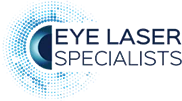Cataracts affect over half a million Australians every year. Many people may dread the day they have a cataract but eye cataracts are actually a very normal part of ageing. Much like wrinkles and grey hairs. Thus, we expect the number of cataract diagnoses and eye cataract treatments performed every year to increase as our population ages. Cataract surgery is already one of the most common surgical procedures done in the Western world.
What is a cataract?
A cataract refers to any opacity of the crystalline lens inside the eye. The purpose of this lens is to provide some control over the bending and refraction of light as it enters the eye. Enabling it to focus to a sharp point on the sensory retina at the back of the eyeball to provide clear vision.
Cataracts are often quoted as one of the leading causes of blindness in the world. However, this statement is not based on cataracts causing permanent damage to the eye. Cataract treatment is still not accessible in many developing countries worldwide. This means that an individual with a dense cataract is blind only due to the lack of adequate access to eye care. Though our healthcare systems are far from perfect, we are fortunate in Western society. With an array of eye care providers in the form of optometrists and ophthalmologists.
What are the symptoms of cataract?
-
Blurry vision. Some patients will also describe their vision as filmy or hazy, like looking through a dirty window.
-
Glare sensitivity. As light scatters and bounces off the opacities in a lens with cataract, your eye may perceive this as increased glare and associated discomfort.
-
Difficulty driving at night or in low contrast road conditions. Our pupils dilate and open further in dim lighting conditions. The purpose of this is to permit more light into the eye and so improve your night vision. However, it also means there is more area exposed of the lens and cataract sitting behind the pupil. Having a greater potential to scatter light entering the eye. This can make people feel unsafe when driving in darker conditions. Especially because of glare from street lights and oncoming car headlights.
-
Difficulty reading. The process of reading is complex and involves much more than the eyes. However, the ability of the eyes to discern the fine detail of text plays a big part. Patients with cataract will often report that they now need much better lighting to be able to read with ease. This is due to the degradation of contrast vision from cataract. Conversely, when reading off a digital device such as a tablet or phone, if the screen is too bright the cataract may cause discomfort from glare.
What is the best treatment for cataract?
Currently, the only option considered to be a real eye cataract treatment with our existing modern medicine is surgical extraction of the cataract. Researchers are working on a steroid-based eye drop to reverse the effects of cataract, but this is still in development.
If you think you may be developing a cataract, speak to your eye care practitioner. If the cataracts are not having any significant visual impact you may be advised to wait and monitor them. Otherwise, your optometrist can refer you to a suitable eye surgeon: 03 9070 5788




